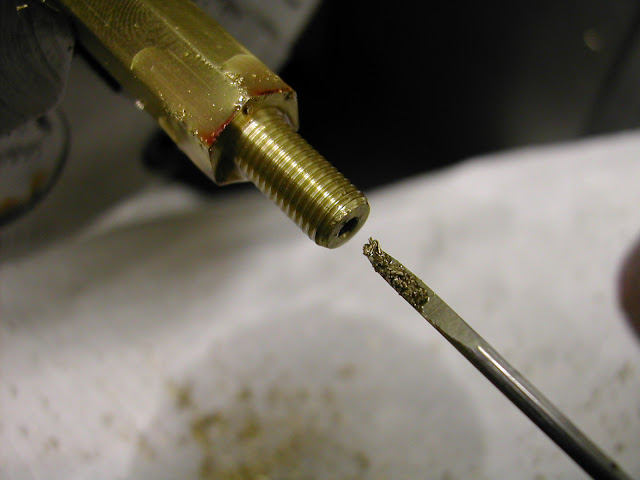Hi Chris - first off well done for producing a running engine despite its 'apparent' problems. It sounds and appears however that it may be oscillating which is a sign of over compression and too rich a fuel setting. It will vibrate considerably if it is doing this. If you can't close the needle then you have no control over the fuel setting.
Your fuel make up sounds ok but how much IPN did you use - Did you actually get IPN

(lucky fellow). Also what is the prop size.
Other than that taking it one thing at a time -
Bubbly oil coming from the comp screw means only one thing and that is as you rightly say a contra piston too loose. You probably
can hear it going up and down with the piston. I wouldn't continue to run it like this until you have sorted that out. If you made the contra piston out of cast iron you may be able to grow it by heat treating it - check out the Eta thread again. I had to do this on two CPs on this last lot. It's a good way of recovering a loose CP but you can only do it the once.
Black gunge coming from the exhaust is usually one of two things especially early on like this. As said you may have it overcompressed a bit so it's running 'hard' which will sound rough also getting hot very quickly which will create a carbon rich exhaust. Once it's running right, it's probably just the parts bedding in and the black content will soon diminish. Again you can see this on the Tigres and the Etas
Setting the needle to re-solder - screw the thimble right in then back off two turns. Heat the solder then at the same time push the needle inwards to seat and close the orrifice - you can check this is closed by putting some fuel tube on the inlet and blowing down it. Being able to run with it right out probably means no more than that the orifice is very small - sufficiently small enough to let the engine run rich.
Don't despair - the fact that it's firing speaks volumes. You'll certainly know when you have the settings right - if it will run like this at the moment it should be more than capable of running much better once you sort these small issues
Any further advice on running just ask - I'll be glad to help
Good Luck - Ramon




















![DreamPlan Home Design and Landscaping Software Free for Windows [PC Download]](https://m.media-amazon.com/images/I/51kvZH2dVLL._SL500_.jpg)








